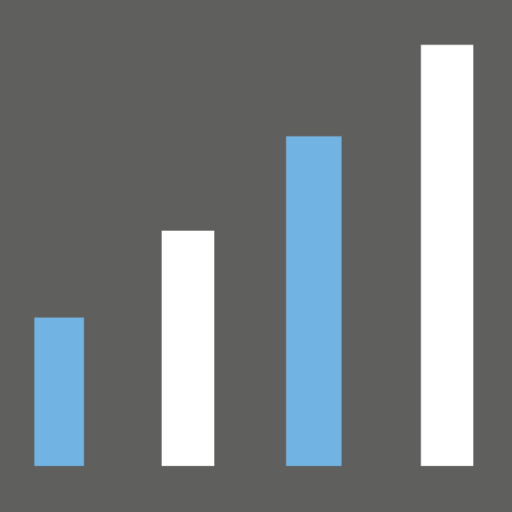Table of Contents
Market Overview
The global Checkpoint Inhibitors for Treating Cancer Market is experiencing exponential growth, driven by the revolutionary impact of these immunotherapies on cancer treatment. Checkpoint inhibitors are a class of drugs that block certain proteins (checkpoints) on immune cells that prevent the immune system from attacking cancer cells. By blocking these checkpoints, these drugs unleash the immune system to recognize and destroy cancer cells. The Checkpoint Inhibitors for Treating Cancer Market includes various types of inhibitors, such as PD-1 inhibitors, PD-L1 inhibitors, and CTLA-4 inhibitors, each targeting different checkpoints in the immune system. The market is characterized by increasing regulatory approvals, expanding applications across various cancer types, and ongoing clinical trials to explore new combinations and indications.
Market Size and Forecast
The global Checkpoint Inhibitors for Treating Cancer Market was valued at US$ 19640 million in 2024 and is projected to reach a revised size of US$ 94850 million by 2031. This represents a Compound Annual Growth Rate (CAGR) of 25.6% during the forecast period. The growth is attributed to the increasing adoption of checkpoint inhibitors as first-line and second-line treatments for various cancers and the expanding approval of these drugs for new indications. The Checkpoint Inhibitors for Treating Cancer Market demonstrates a remarkable outlook, driven by the significant clinical benefits and the ongoing innovation in cancer immunotherapy.
Growth Drivers
Several factors are driving the growth of the Checkpoint Inhibitors for Treating Cancer Market. Firstly, the increasing prevalence of cancer worldwide is a major driver. Secondly, the proven clinical efficacy of checkpoint inhibitors in improving survival rates and quality of life for cancer patients contributes to market growth. The expanding approval of checkpoint inhibitors for various cancer types and treatment lines is also driving market expansion. Additionally, the increasing investments in cancer research and development and the growing awareness of immunotherapy are boosting market growth.
| Growth Driver | Description | Impact |
|---|---|---|
| Cancer Prevalence | Rising incidence of cancer globally. | Higher demand for effective cancer treatments. |
| Clinical Efficacy | Proven success in improving survival and quality of life. | Increased adoption and physician confidence. |
| Expanding Approvals | Growing number of approved indications and cancer types. | Broader market reach and treatment options. |
Market Trends
Key trends in the Checkpoint Inhibitors for Treating Cancer Market include the development of novel checkpoint inhibitors, the exploration of combination therapies, and the increasing use of biomarkers to predict treatment response. Novel checkpoint inhibitors targeting new checkpoints or offering improved safety profiles are being developed. Combination therapies, which combine checkpoint inhibitors with other cancer treatments such as chemotherapy or targeted therapies, are showing promising results. Biomarkers, such as PD-L1 expression and tumor mutational burden (TMB), are being used to identify patients who are more likely to respond to checkpoint inhibitors. These trends reflect the ongoing efforts to optimize the effectiveness and personalize the use of cancer immunotherapy.
Opportunities in the Market
The Checkpoint Inhibitors for Treating Cancer Market presents several lucrative opportunities for pharmaceutical companies and healthcare providers. One significant opportunity lies in the development of checkpoint inhibitors that can overcome resistance mechanisms. Expanding the use of checkpoint inhibitors to treat earlier stages of cancer also offers growth potential. Moreover, targeting underserved patient populations with limited treatment options presents substantial opportunities. Investing in research and development to identify predictive biomarkers and personalized treatment strategies can further drive market growth. Addressing the specific needs of different cancer types and patient subgroups is another promising avenue for growth.
Regional Analysis
North America currently holds a significant share of the global Checkpoint Inhibitors for Treating Cancer Market, driven by high healthcare spending and a well-established regulatory framework. Europe also represents a substantial market, with increasing adoption of immunotherapy and a growing focus on personalized medicine. The Asia Pacific region is expected to witness the fastest growth during the forecast period, fueled by the increasing prevalence of cancer and the growing access to healthcare, particularly in China and India. South America and the Middle East & Africa are also emerging as potential markets, with growing healthcare infrastructure and increasing awareness of the benefits of cancer immunotherapy.
| Region | Key Factors | Market Share |
|---|---|---|
| North America | High healthcare spending, established regulatory framework | Significant |
| Europe | Increasing immunotherapy adoption, personalized medicine focus | Substantial |
| Asia Pacific | Rising cancer prevalence, growing healthcare access | Fastest Growing |
Segmentation by Type
The Checkpoint Inhibitors for Treating Cancer Market is segmented by type into PD-1 inhibitors, PD-L1 inhibitors, and CTLA-4 inhibitors. PD-1 inhibitors currently dominate the market, owing to their broad application across various cancer types and their well-established safety and efficacy profiles. PD-L1 inhibitors, which target the PD-L1 protein on cancer cells, are also widely used. CTLA-4 inhibitors, which target a different checkpoint protein, are often used in combination with other immunotherapies. Each segment is benefiting from ongoing research and development and the increasing adoption of immunotherapy in cancer treatment.
Segmentation by Application
Based on application, the Checkpoint Inhibitors for Treating Cancer Market is segmented into melanoma treatment, bladder cancer treatment, and other cancer treatments. Melanoma treatment accounts for a significant share of the market, as checkpoint inhibitors have demonstrated remarkable efficacy in treating advanced melanoma. Bladder cancer treatment is another key application area, with checkpoint inhibitors offering new treatment options for patients with advanced or metastatic bladder cancer. The “other” segment includes applications in various cancer types, such as lung cancer, kidney cancer, and Hodgkin lymphoma. The growth in these application segments reflects the expanding use of checkpoint inhibitors across different cancer types and treatment lines.
Competitive Landscape
The global Checkpoint Inhibitors for Treating Cancer Market is characterized by the presence of several key players, including Bristol-Myers Squibb, Merck & Co., Inc., Roche, AstraZeneca, and Pfizer. These companies are focusing on product innovation, strategic partnerships, and geographic expansion to strengthen their market positions. Competition is intensifying as more players enter the market, driven by the increasing demand for checkpoint inhibitors. Key competitive strategies include offering a diverse product portfolio, focusing on clinical trial development, and expanding access to treatment through pricing and reimbursement strategies.
| Company | Key Strategies | Market Focus |
|---|---|---|
| Bristol-Myers Squibb | Product innovation, combination therapies | Melanoma, lung cancer, immuno-oncology |
| Merck & Co., Inc. | Clinical trial development, biomarker research | Broad cancer indications, PD-1 inhibitors |
| Roche | Strategic partnerships, diagnostic integration | PD-L1 inhibitors, personalized medicine |
Demand Forecast
The demand for Checkpoint Inhibitors for Treating Cancer is expected to continue growing strongly over the next decade, driven by the factors mentioned above. The increasing prevalence of cancer, the proven clinical efficacy of checkpoint inhibitors, and the expanding approval of these drugs for new indications are all contributing to the sustained demand for these immunotherapies. The market is also expected to benefit from the development of new and innovative products that offer improved efficacy, safety, and personalized treatment strategies. Overall, the demand forecast for the Checkpoint Inhibitors for Treating Cancer Market remains highly positive, with significant opportunities for growth and expansion.
Challenges and Restraints
Despite the positive outlook, the Checkpoint Inhibitors for Treating Cancer Market faces certain challenges and restraints. One major challenge is the high cost of checkpoint inhibitors, which can limit access for some patients. Another challenge is the potential for immune-related adverse events, which can require careful monitoring and management. Additionally, the market faces competition from other cancer treatment modalities, such as targeted therapies and chemotherapy. Addressing these challenges will be crucial for sustained growth in the Checkpoint Inhibitors for Treating Cancer Market.
Future Outlook
The future of the Checkpoint Inhibitors for Treating Cancer Market looks promising, with continued growth expected over the next decade. The market is poised to benefit from the increasing prevalence of cancer, the ongoing innovation in cancer immunotherapy, and the expanding understanding of the immune system’s role in cancer. Key trends such as the development of novel checkpoint inhibitors, the exploration of combination therapies, and the increasing use of biomarkers are expected to drive market innovation and expansion. Pharmaceutical companies and healthcare providers who can effectively address the challenges and capitalize on the opportunities will be well-positioned for success in the Checkpoint Inhibitors for Treating Cancer Market.
| Aspect | Future Trend | Impact on Market |
|---|---|---|
| Technology | Development of more targeted and effective checkpoint inhibitors | Improved patient outcomes, reduced side effects |
| Personalized Medicine | Use of biomarkers to predict treatment response | Tailored treatment plans, optimized efficacy |
| Combination Therapies | Combining checkpoint inhibitors with other cancer treatments | Synergistic effects, enhanced tumor control |





